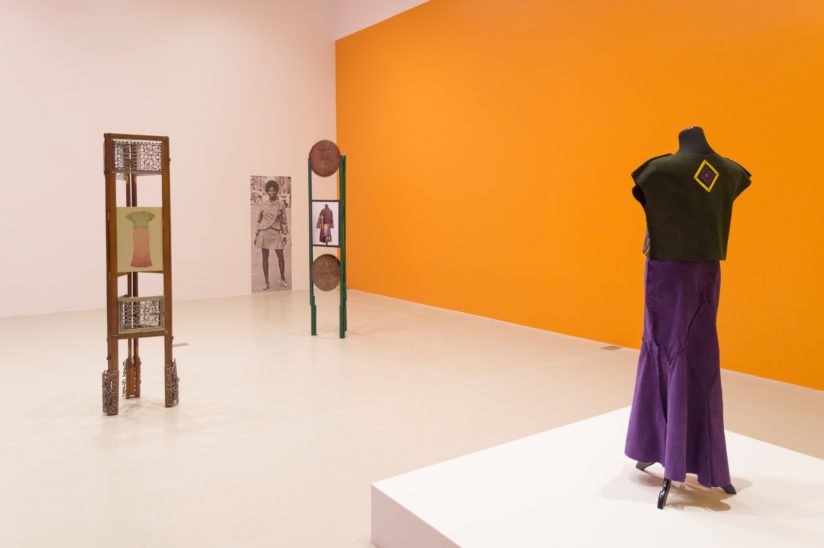September 21 – December 1, 2019
Disrupting the boundaries between sculpture and fashion, Jarrell’s wearable artworks merge Black liberation politics with art and design. In 1969, she made what eventually became one of her best known works: Revolutionary Suit. Constructed of grey tweed, the suit featured a bright yellow suede bandolier (bullet belt), its slots filled with brightly coloured wooden pegs or pastels—ammunition for creation, or for revolution. Jarrell began working professionally on Chicago’s South Side in the early 1960s and is a co-founder of the influential AFRICOBRA (African Commune of Bad Relevant Artists), whose works sought to convey the power and pride of Black communities. This installation gathers sculptures, garments, and archival material representing nearly fifty years of radical practice.
Jarrell’s work is co-presented by AGYU and the Toronto Biennial of Art.
Additional work by Jae Jarrell is on view at 259 Lake Shore Blvd E.
Bio
Jae Jarrell (born in 1935, Cleveland, USA) is a sculptor, painter and fashion designer. Jae became involved in the Organization of Black American Culture (OBAC) in the mid-1960sin her boutique on the south side of Chicago, which created the Wall of Respect mural in 1967. With her husband Wadsworth Jarrell, Jae opened a small gallery below their home and studio, which hosted live jazz, exhibitions, and many early meetings of the Black artist collective later known as AFRICOBRA. Jae created groundbreaking wearable artworks that interpreted the ideas of the group, as well as developed methods of translating Black positivity into fashion.
Exhibition Site
Art Gallery of York University (AGYU)
Prior to colonization, the York University Keele Campus' footprint was part of the tableland forests and valley lands between Oak Ridges Moraine and Lake Ontario. Land along Black Creek was home to a significant Haudenosaunee village and later the Anishinaabe. In 1805, the boundary of the 1787 so-called Toronto Purchase was surreptitiously extended north to include what is now York’s campus. Built in 1962 on 465 acres of parcelled land earmarked for subsidized housing developments, York’s campus buried 15 tributary streams of Black Creek, while preserving four secondary-growth woodlots.

8 Accolade East Building, York University, 4700 Keele Street
Toronto ON
M3J 1P3


